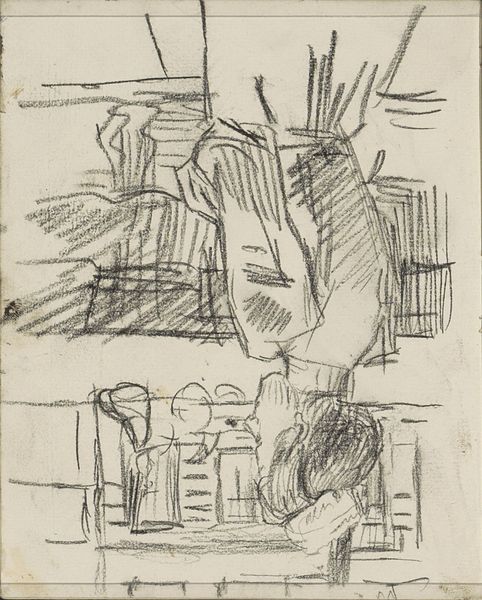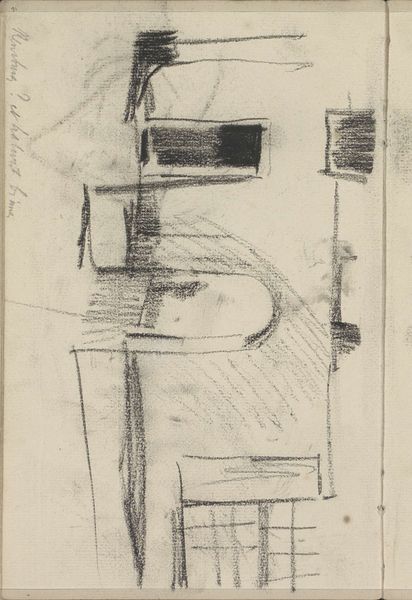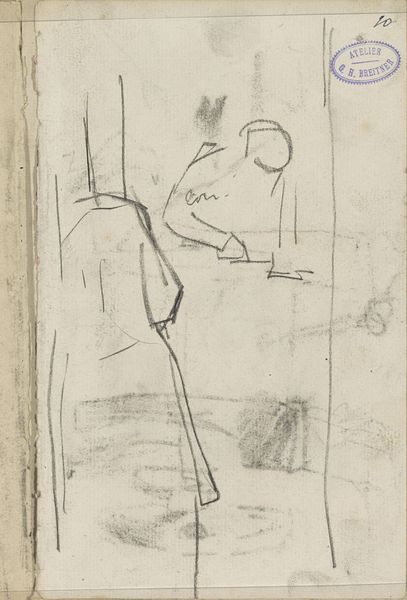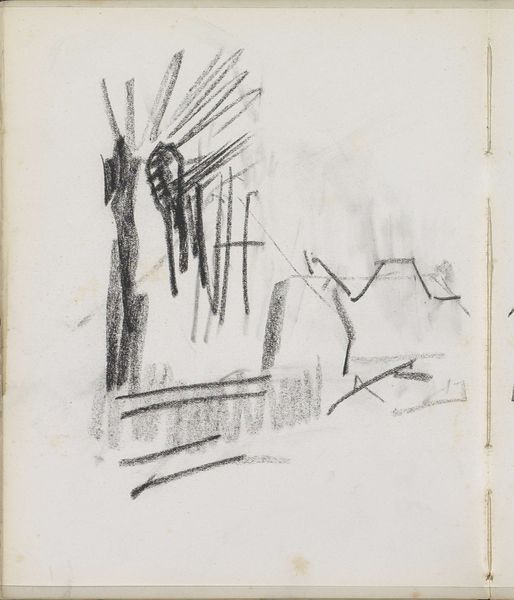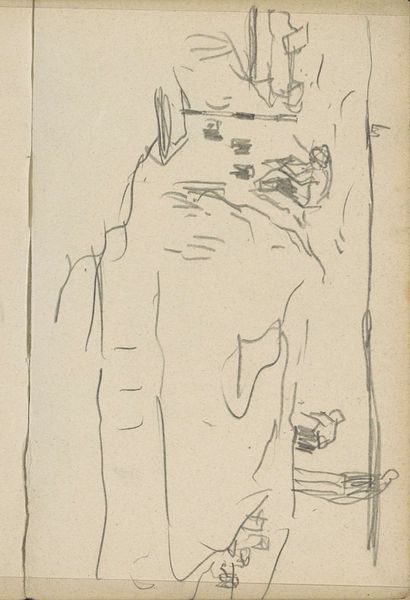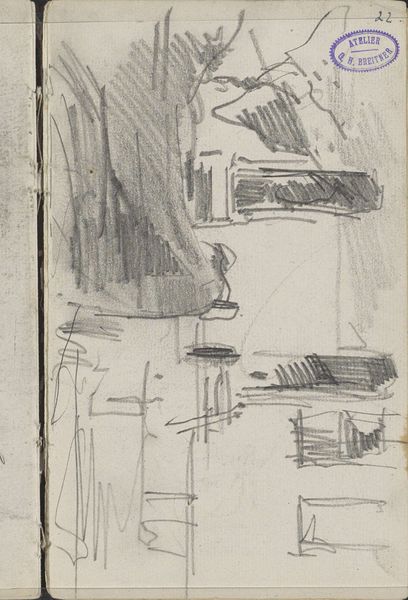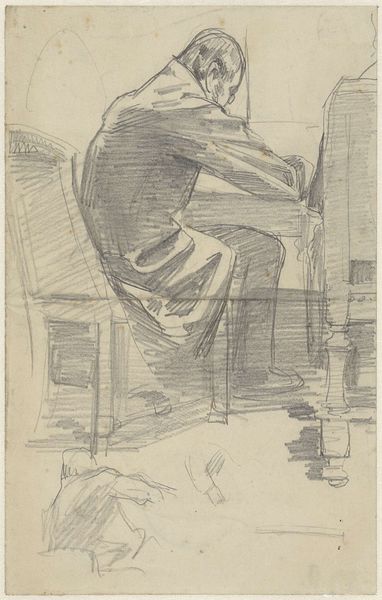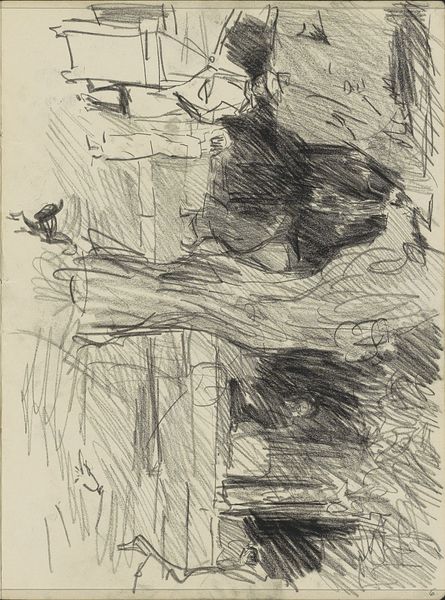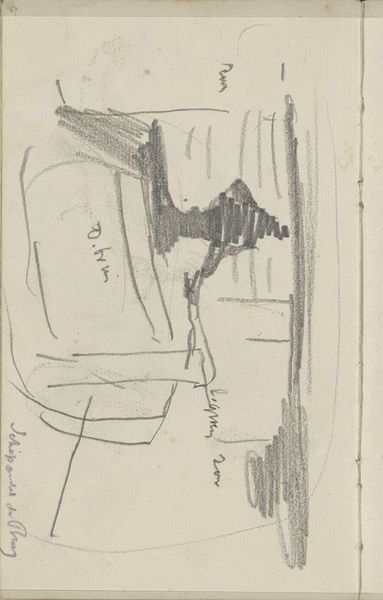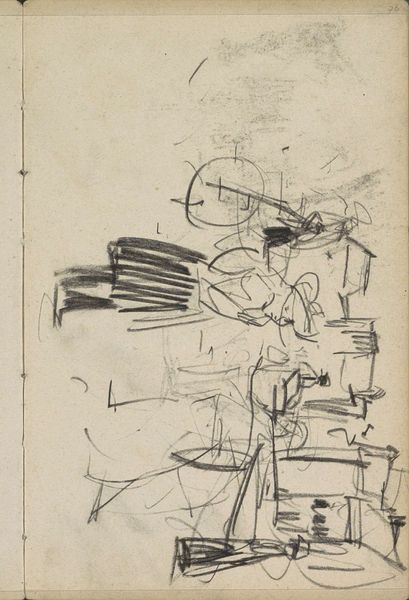
drawing, pencil
#
portrait
#
drawing
#
impressionism
#
figuration
#
pencil
#
genre-painting
Copyright: Rijks Museum: Open Domain
Curator: This pencil drawing, created by George Hendrik Breitner between 1883 and 1885, is titled "Twee mannen, mogelijk in een etablissement"—"Two Men, possibly in an Establishment." Editor: It strikes me as incredibly raw, almost unfinished. You can feel the speed and pressure of the artist's hand. The figures are suggested rather than fully formed. Curator: Absolutely. Breitner's engagement with the gritty realities of urban life meant he valued capturing the ephemeral—the fleeting moments of daily existence—over polished, academic representations. Think about what establishments, like bars, meant during the era and what socioeconomic functions they may have played. Editor: Indeed. Consider also the male camaraderie it depicts, a space where men sought refuge and solidified bonds, all within a social hierarchy built on exclusivity and, at times, the exploitation of female labor. This all while many early impressionist works focus heavily on the visual experiences of bourgeois women. Curator: Breitner’s materials are central to understanding this drawing’s purpose. The directness of pencil on paper speaks to his methodology. It would have allowed the artist to quickly and efficiently document his observations on the spot before developing them further, or possibly setting them aside. There isn't any indication here of preparing for formal reproduction of this drawing or other manipulation. Editor: And yet, even within its minimalist approach, the artwork invites us to contemplate the nuanced realities of working-class men in Amsterdam, particularly against the backdrop of a rapidly changing city. What did such spaces signify for individuals navigating a transforming industrial society? What networks and social safety nets existed, or were lacking, within such settings? Curator: Considering its location in the Rijksmuseum now, it highlights a broader narrative regarding artistic representations of everyday labor and its connection to emerging markets during that time. Editor: Precisely. I appreciate the drawing's capacity to generate reflection on social conditions. Curator: Agreed. It compels a reassessment of those foundational perspectives in art history.
Comments
No comments
Be the first to comment and join the conversation on the ultimate creative platform.
